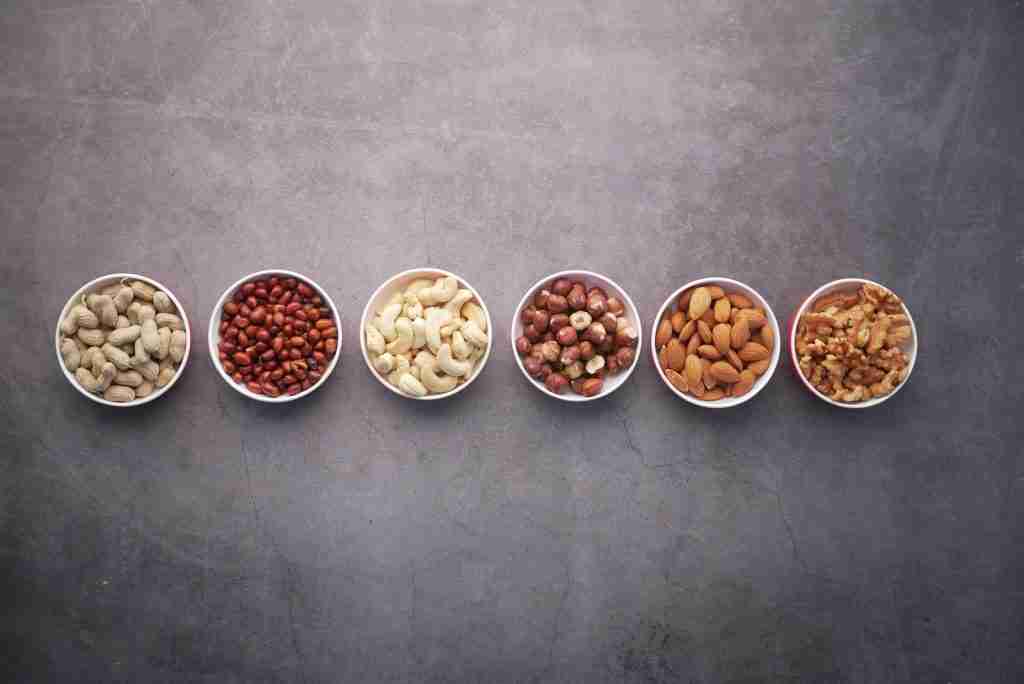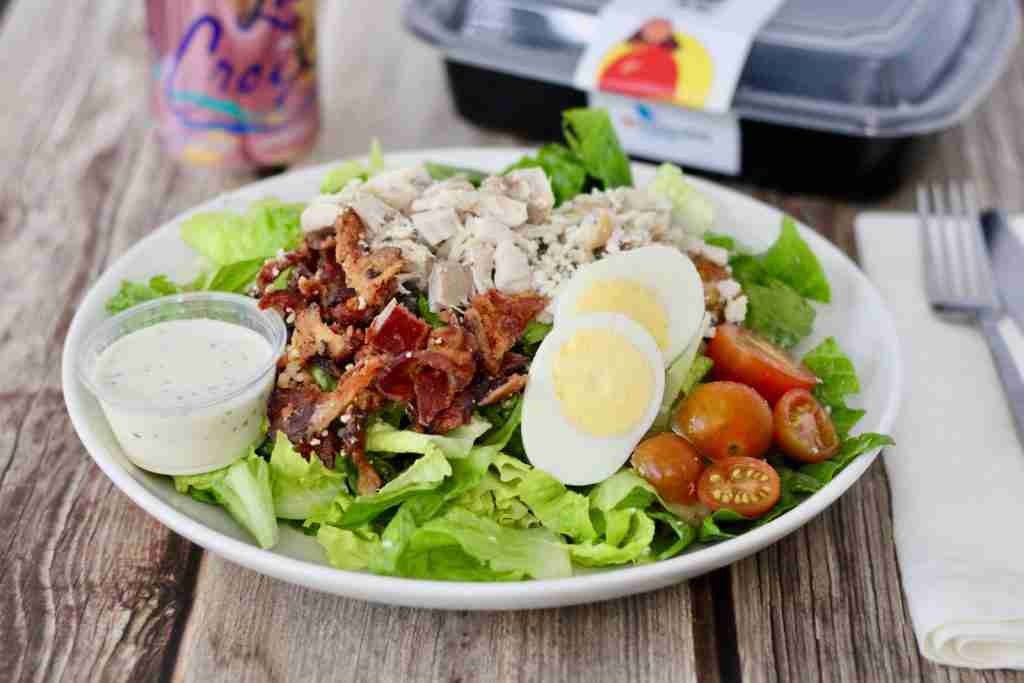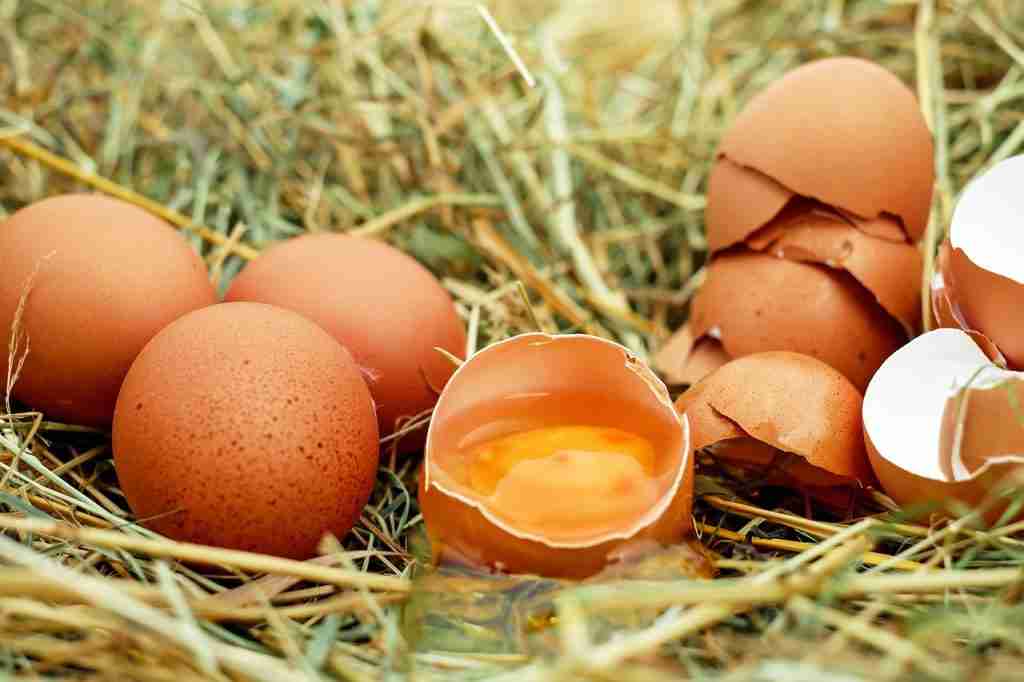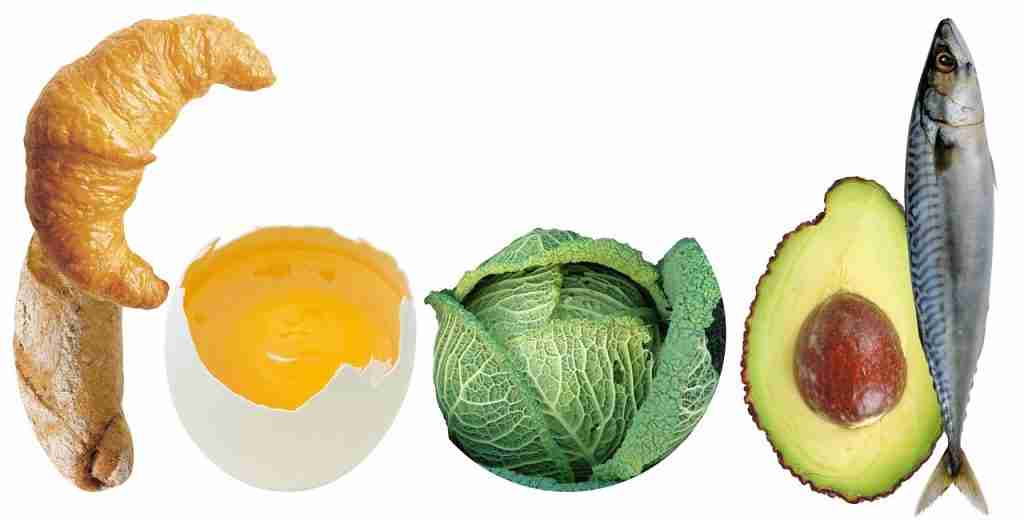26 Fun Facts About Protein That Will Make You Think Twice
1. Proteins are the building blocks of life.
Proteins are the building blocks of life, essential for the structure and function of cells.
They perform a multitude of critical tasks, from supporting muscle growth and repair to acting as enzymes that catalyze vital chemical reactions. Without proteins, life as we know it would not be possible.
The diversity and complexity of proteins allow for the remarkable diversity of life forms on Earth.
2. Proteins are involved in almost every biological process in the body.
Proteins are integral to nearly every biological process that occurs in the human body.
Whether it’s carrying oxygen in the blood (hemoglobin), defending against infections (antibodies), or breaking down enzymes, proteins play integral roles in maintaining our health, which is one of the fun facts about Protein.
It is truly remarkable how proteins orchestrate and contribute to the vast array of processes that sustain life in our bodies.
3. Protein is the most abundant molecule in the human body after water.
Comprising tissues, organs, muscles, and enzymes, proteins are essential for the body’s structure and function, highlighting their significance in maintaining overall health.
Their abundance underscores the critical nature of proteins in sustaining life and emphasizes the importance of obtaining adequate protein through our diets to support optimal health and well-being.
4. The word “protein” comes from the Greek word “proteios,”.

The term “protein” derives from the Greek word “proteios,” which translates to “primary” or “of the first rank.”
This etymology reflects the fundamental role of proteins in life and underscores their vital importance.
Just as the word suggests, proteins are indeed primary in nature, serving as essential components of living organisms.
5. The human body is composed of approximately 20% protein by weight.
One of the fun facts about Protein is that Protein constitutes a substantial portion of the human body, accounting for approximately 20% of its weight.
This significant proportion demonstrates the essential nature of proteins in our bodies and their central role in sustaining life.
Furthermore, proteins participate in various biochemical reactions as enzymes, facilitating vital processes such as digestion, metabolism, and DNA replication.
6. The shape and structure of proteins determine their function.
The shape and structure of proteins are pivotal factors that govern their function within the intricate machinery of the human body.
Proteins are incredibly versatile molecules that can adopt a vast array of three-dimensional conformations.
This folding process is crucial, as it enables proteins to interact specifically with other molecules, such as enzymes with their respective substrates or antibodies with antigens.
7. Proteins are made up of different combinations and sequences of amino acids.
Proteins, the fundamental building blocks of life, are composed of intricate combinations and sequences of amino acids.
Amino acids are organic compounds that contain an amino group and a carboxyl group, along with a unique side chain.
The sequence of these amino acids within a protein chain determines its ultimate structure and function. With a wide variety of amino acids available, proteins can exhibit extraordinary diversity and complexity.
8. Amino acids are linked together by peptide bonds to form proteins.

These bonds are formed when the carboxyl group of one amino acid reacts with the amino group of another, resulting in the release of a water molecule.
This process, known as dehydration synthesis or condensation reaction, links the amino acids in a linear chain, known as a polypeptide, which is one of the fun facts about Protein.
The peptide bonds between amino acids provide stability to the protein structure and serve as the backbone of the protein chain.
9. The order and arrangement of amino acids in a protein chain are determined by the genetic code.
The sequence of nucleotides in DNA provides instructions for the assembly of amino acids, ensuring the accurate formation of proteins.
Each three-letter sequence of nucleotides called a codon, corresponds to a specific amino acid or a signal to start or stop protein synthesis.
During the process of protein synthesis, known as translation, messenger RNA (mRNA) molecules serve as intermediaries, carrying the genetic information from DNA to the ribosomes, where proteins are synthesized.
10. Proteins can be classified into different types.
Enzymes, for instance, act as catalysts, facilitating chemical reactions and enabling vital processes to occur at an accelerated rate.
Antibodies, on the other hand, play a crucial role in the immune system, recognizing and neutralizing foreign substances such as bacteria or viruses.
Structural proteins provide support and stability to cells, tissues, and organs, contributing to their integrity and shape.
11. One of the fun facts about Protein is that Enzymes are proteins that act as catalysts.
Enzymes serve as molecular facilitators, accelerating the conversion of substrates into products without being consumed in the process.
Enzymes achieve this remarkable feat by lowering the activation energy required for a reaction to occur, thus enabling vital biochemical processes to proceed at a rate compatible with life.
Due to their specific three-dimensional structures, enzymes possess active sites that precisely fit the substrates they interact with, creating an environment conducive to the desired reaction.
12. Antibodies defend the body against pathogens.
Antibodies, also known as immunoglobulins, are produced by specialized white blood cells called B cells.
Antibodies possess a highly specific structure that allows them to recognize and bind to unique molecules on the surface of pathogens, such as bacteria, viruses, or other harmful substances.
This binding initiates a series of immune responses, including neutralization of the pathogen, activation of other immune cells, and marking the pathogen for destruction.
13. Structural proteins preserve the shape of cells, tissues, and organs.
Structural proteins possess strong and resilient properties that contribute to the structural framework of various biological structures.
Collagen, for instance, is a prominent structural protein found in connective tissues, such as skin, tendons, and bones, giving them strength and elasticity, which is one of the fun facts about Protein.
Another example is keratin, which forms the structural foundation of hair, nails, and the outer layer of the skin.
14. Transport proteins facilitate the movement of molecules across cell membranes.
Transport proteins act as gatekeepers, regulating the passage of specific molecules in and out of cells.
They possess unique binding sites that selectively recognize and transport specific substances, such as ions, nutrients, hormones, and neurotransmitters.
By utilizing various mechanisms, including active transport or facilitated diffusion, transport proteins ensure the controlled and efficient transport of molecules across cell membranes, which is one of the fun facts about Protein.
15. Protein synthesis occurs through a process called translation.
Translation process occurs in the ribosomes, the cellular structures responsible for protein production.
Translation involves the conversion of the genetic information encoded in messenger RNA (mRNA) into a functional protein.
The process begins when mRNA, synthesized in the nucleus from DNA, is transported to the ribosomes in the cytoplasm.
16. The primary source of protein is animal and plant-based foods.

Animal products, such as meat, poultry, fish, eggs, and dairy, are renowned for their rich protein content.
These sources provide complete proteins, meaning they contain all the essential amino acids required by the body.
Additionally, plant-based foods offer valuable protein sources, including legumes, beans, lentils, tofu, tempeh, quinoa, and certain grains.
17. Animal-based protein sources provide all essential amino acids.
Animal-based protein sources, including meat, fish, eggs, and dairy products, hold a distinct advantage as they are considered complete proteins.
Complete proteins contain all nine essential amino acids that the human body cannot produce on its own and must obtain from dietary sources.
These animal-derived foods offer an abundant and balanced array of amino acids, making them highly efficient in supporting various physiological functions.
18. Plant-based protein sources can be combined to form complete proteins.
Plant-based protein sources, such as legumes, grains, and vegetables, provide an alternative avenue for obtaining essential amino acids by combining different food sources to form complete proteins.
While individual plant-based proteins may be deficient in one or more essential amino acids, strategic combinations can overcome these limitations.
For example, legumes like lentils, chickpeas, and beans are rich in certain amino acids, while grains such as rice, wheat, and quinoa are abundant in others.
19. Protein digestion begins in the stomach with the action of the enzyme pepsin.
One of the fun facts about Protein is that Protein digestion initiates in the stomach, where the enzyme pepsin plays a crucial role.
As food enters the stomach, it is mixed with gastric juices containing hydrochloric acid and pepsinogen, an inactive form of pepsin.
The acidic environment of the stomach triggers the conversion of pepsinogen into its active form, pepsin. Pepsin then acts on proteins, breaking them down into smaller polypeptides through a process called proteolysis.
20. Proteins are turned into amino acids during the digestion process.

One of the fun facts about Protein is that during the digestion process, proteins undergo a transformation where they are broken down into their constituent components known as amino acids.
This breakdown occurs through the combined action of various digestive enzymes.
In the stomach, proteins are subjected to the enzymatic activity of pepsin, which cleaves the protein chains into smaller polypeptides.
21. Amino acids are transported to cells for protein synthesis.
Amino acids are efficiently absorbed into the bloodstream through the walls of the small intestine.
Inside the cells, amino acids are incorporated into ribosomes, the cellular machinery responsible for protein production.
Thus cells utilize amino acids to construct new proteins as needed, supporting growth, repair, and various physiological functions.
22. Protein turnover is the constant breakdown and synthesis of proteins in the body.
Protein turnover refers to the continuous process of both protein breakdown and synthesis that takes place within the body.
It is a dynamic and vital mechanism that ensures the maintenance and renewal of proteins in various tissues and organs.
Through protein turnover, old or damaged proteins are broken down, and new proteins are synthesized to replace them.
23. RDA for protein intake depends on different factors.
The recommended dietary allowance (RDA) for protein intake varies depending on factors such as age, sex, and activity level.
The recommended dietary allowance (RDA) for protein intake is not a one-size-fits-all value; rather, it varies based on several individual factors.
One of the primary determinants is age, as protein needs tend to differ at various life stages. For instance, infants and children undergoing rapid growth require higher amounts of protein per unit of body weight compared to adults.
24. Athletes require higher protein.

Athletes and individuals involved in intense physical activity have increased protein requirements to support muscle repair, growth, and overall performance.
During exercise, especially activities that involve resistance training or endurance exercise, muscle fibers undergo micro-tears and breakdown
Adequate protein intake is crucial for the repair and rebuilding of these damaged muscle fibers, leading to muscle recovery and adaptation.
25. Protein can help promote satiety and aid in weight management.
Protein plays a crucial role in promoting satiety and supporting weight management goals, which is one of the fun facts about Protein.
Compared to carbohydrates and fats, protein takes longer to digest and has a higher thermic effect on food, meaning that it requires more energy to be metabolized.
This results in a prolonged feeling of fullness and satisfaction after a protein-rich meal, reducing the likelihood of overeating or excessive snacking.
26. Consuming protein-rich foods build muscle mass.
Consuming protein-rich foods is a key factor in building and maintaining muscle mass.
Protein provides the essential amino acids necessary for muscle protein synthesis, the process by which new muscle proteins are created.
When we engage in resistance training or other forms of exercise that challenge our muscles, the body requires a sufficient supply of amino acids to repair and rebuild the damaged muscle fibers.
Proteins are large, complex molecules that are vital for the structure, function, and regulation of cells and tissues in living organisms.
They are considered one of the fundamental building blocks of life. Proteins are composed of long chains of smaller units called amino acids, which are linked together through chemical bonds.
Protein powder can be a good source of protein for people who are looking to increase their protein intake. However, it is important to choose a protein powder that is high quality and that is made from a good source of protein.
There are many different types of protein powder available, and they are made from a variety of sources, including whey protein, casein protein, soy protein, and pea protein.
Proteins are essential for the proper functioning and maintenance of the human body. Here are some key reasons why proteins are important:
Structural Support: Proteins provide structure and support to cells, tissues, and organs. They form the basis of muscles, tendons, ligaments, skin, hair, and nails. Collagen, a protein, is responsible for the strength and elasticity of connective tissues.
Enzymes and Metabolic Reactions: Many proteins act as enzymes, which are catalysts for biochemical reactions in the body. Enzymes facilitate crucial processes such as digestion, metabolism, energy production, and DNA replication. Without enzymes, these reactions would occur too slowly or may not occur at all.
Muscle Growth and Repair: Proteins are essential for muscle growth, maintenance, and repair. During exercise or physical activity, muscle tissues undergo microscopic damage. Proteins are necessary for repairing and rebuilding these damaged muscle fibers, contributing to muscle growth and recovery.
Hormones and Signaling: Some proteins serve as hormones or signaling molecules, regulating various physiological processes and communication between cells. For example, insulin is a protein hormone that regulates blood sugar levels, while hormones like growth hormone and insulin-like growth factors are crucial for growth and development.
Proteins are essential for life, and they play a role in many different functions in the body. Some of the most important functions of proteins include:
Structure: Proteins are the building blocks of tissues, such as muscle, bone, and skin. They are also important for repairing tissues that have been damaged.
Enzymes: Proteins are enzymes, which are molecules that speed up chemical reactions in the body. They are essential for many different biological processes, including digestion, metabolism, and cell signaling.
Transport: Proteins transport substances around the body. For example, the protein hemoglobin transports oxygen in the blood.
Hormones: Proteins are hormones, which are molecules that regulate many different functions in the body. They are essential for growth, development, and reproduction.
Antibodies: Proteins called antibodies fight off infection. They bind to foreign substances, such as bacteria and viruses, and help to destroy them.
Energy: Proteins can be used for energy, but they are not the body’s main source of energy.
Regulation of Gene Expression: Certain proteins, called transcription factors, play a role in regulating gene expression. They can activate or suppress specific genes, influencing the production of other proteins and impacting various cellular processes.
pH and Fluid Balance: Proteins help maintain the pH balance and fluid distribution in cells and tissues. For example, proteins in the blood, such as albumin, contribute to maintaining osmotic pressure and preventing fluid from leaking out of blood vessels.
Proteins are also important for maintaining a healthy weight. They help to keep you feeling full after eating, and they can help to boost your metabolism.
The primary structure of a protein is the sequence of amino acids that make up the protein. The amino acids are linked together by peptide bonds, and the sequence of amino acids determines the shape and function of the protein.
There are 20 different amino acids that can be used to make proteins. Each amino acid has a unique side chain, which gives the protein its specific properties. For example, some amino acids are polar, while others are non-polar. Some amino acids are acidic, while others are basic.
The sequence of amino acids in a protein is determined by the DNA of the cell that produces the protein. The DNA code is translated into the amino acid sequence by the ribosome, which is a cellular organelle.
The primary structure of a protein serves as a foundation for its higher-order structures, including secondary, tertiary, and quaternary structures.







